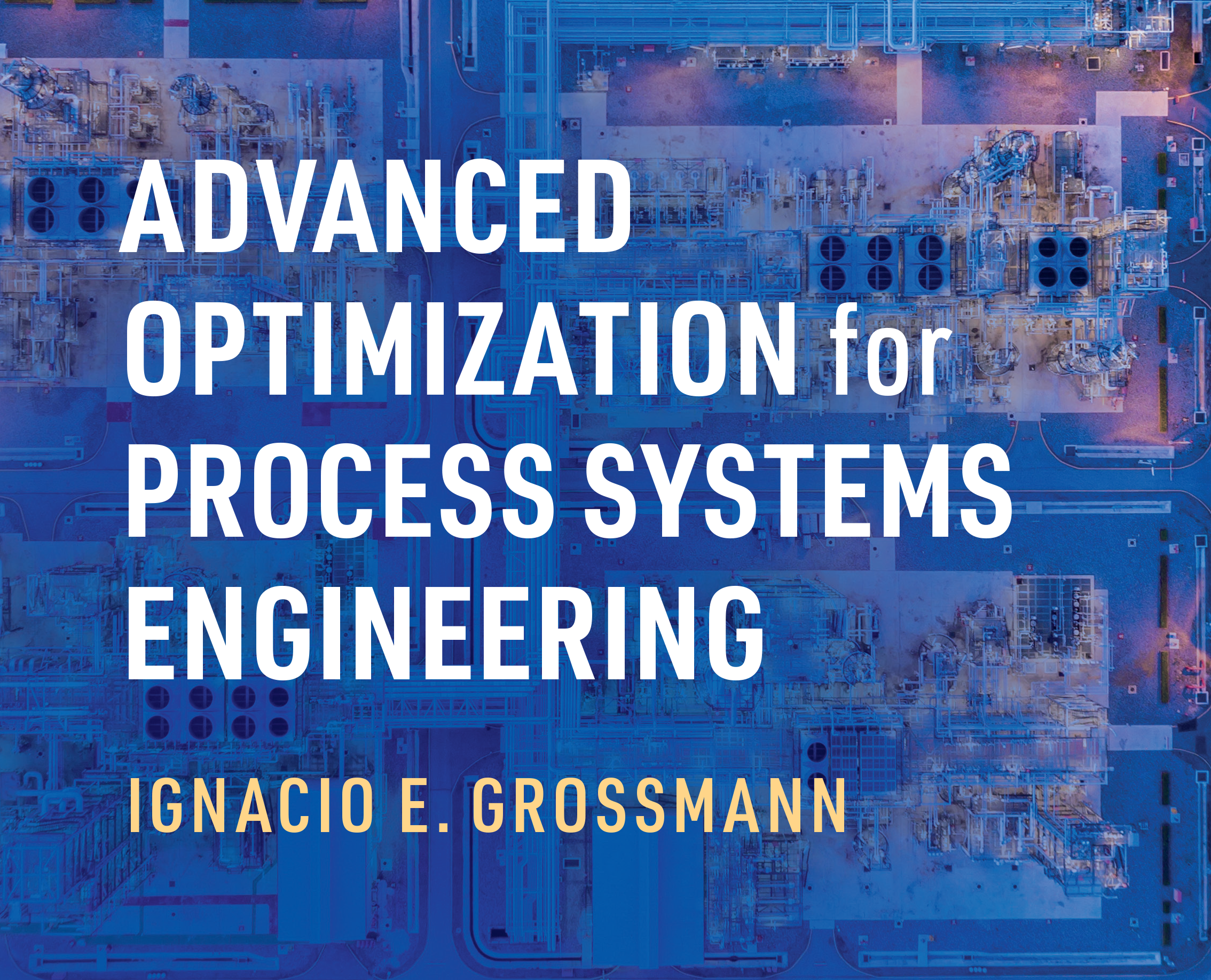Pioneering research and education
Tara Moore
Jun 10, 2021

Source: Cambridge University Press
Ignacio Grossmann has recently published a new textbook, Advanced Optimization for Process Systems Engineering, under Cambridge University Press.
"The first part of the textbook covers basic mathematical optimization concepts," Grossmann, a university professor of chemical engineering, explains. "But then it goes into topics that are relatively recent research interests and that are areas still being developed."
This textbook is close to Grossmann's major research area–specifically, optimization and process systems engineering. Process systems engineering is a discipline that is concerned with the systematic analysis and optimization of decision-making processes for the discovery, design, manufacture, and distribution of chemical products. Process systems engineering considers all the factors that go into making a process system work, and utilizes mathematical optimization, an analytical tool, to determine the best decision at each step. The major areas include process design and product design, energy and sustainability, and enterprise-wide optimization.
Examples in process design include the design of a plant for producing di-methyl ether, while in product design they include the design of the molecular structure of solvents. In energy and sustainability, process systems engineering can be used for the design of water networks for reuse and recycling, while in enterprise-wide optimization, it can be utilized to design a supply chain for the manufacturing and distribution of products such as polystyrene. These are all problems being studied by the Center for Advanced Process Decision-making (CAPD), of which Grossman is currently the director as well as a member.
These problems, though complex, can be solved using mathematical optimization, which is the focus of Grossmann's new book for graduate students. While mathematical optimization is not a new field, Grossmann's approaches it in a unique way.
Most textbooks only focus on continuous optimization, which deal with variables like flows, pressures, and temperatures. One thing that differentiates the textbook from others is that it addresses linear and nonlinear optimization models involving discrete variables. Furthermore, inspired by research at Carnegie Mellon University that was pioneered by University Professor Egon Balas, the textbook deals with Generalized Disjunctive Programming, an active research area in Grossmann's group over the last 15 years.
Generalized Disjunctive Programming has the unique feature that the problems are expressed in terms of both Boolean (i.e. discrete) and continuous variables. In terms of equations, it features linear and nonlinear, and logic statements, which in turn were inspired by John Hooker's research in logic at Carnegie Mellon University's Tepper School of Business. While this sounds complicated, Grossmann's book only requires basic concepts of calculus and linear algebra. The book also addresses problems that involve uncertainties about specific parameters.
In addition to theory and algorithms, the textbook also has a major focus on modeling, asking, "How do you model these problems in the first place?"
"In mathematics or operations research, it is common to take for granted that the model is given. Then, given that model, operations researchers and mathematicians figure out how to solve it," says Grossmann. "But in my book, I also spend quite a bit of time on how should you formulate the discrete/continuous optimization model in the first place."
The textbook is based on notes by Grossmann from the CMU course "Advanced Process Systems Engineering," which is a core course at the graduate level for chemical engineering students, unlike at other schools. The class allows students to learn modeling skills that are highly-valued by industry in addition to basic theory and algorithms.
Grossmann's book consists of 15 chapters. After the introductory Chapter 1, the book addresses the solution of nonlinear equations through Newton's and Quasi-Newton methods in Chapter 2. Chapter 3 introduces basic theoretical optimization concepts (e.g. convexity and Karush-Kuhn-Tucker conditions), while chapter 4 and 5 deal with continuous optimization (nonlinear and linear programming). Chapters 6-11 discuss discrete optimization (mixed-integer linear and mixed-integer nonlinear programing, generalized disjunctive programming and constraint programming). Chapter 12 deals with global optimization, Chapter 13 with Lagrangean decomposition, Chapter 14 with stochastic programming, and Chapter 15 with flexibility analysis. Each chapter contains exercises that involve derivations and simple proofs, as well as numerical problems that require the use of the GAMS modeling system. Appendix A describes software for modeling systems optimization algorithms. Alternatively, Appendix B points to links of websites that address a variety of optimization problems in Process Systems Engineering: optimal separation sequences based on thermally coupled distillation, design of multi-product batch plants, design of integrated and distributed wastewater networks, optimal synthesis and operation of utility plants, planning of offshore oilfield development, optimal location of centralized and decentralized manufacturing facilities, supply chain with risk of facility disruptions, and stochastic inventory management for process networks.
This is not the first book out of the CAPD group at CMU. Larry Biegler, university professor of chemical engineering; Nick Sahindis, who recently left CMU for Georgia Tech; Arthur W. Westerberg, university professor emeritus of chemical engineering; and Grossmann have been involved in four previous textbooks.
